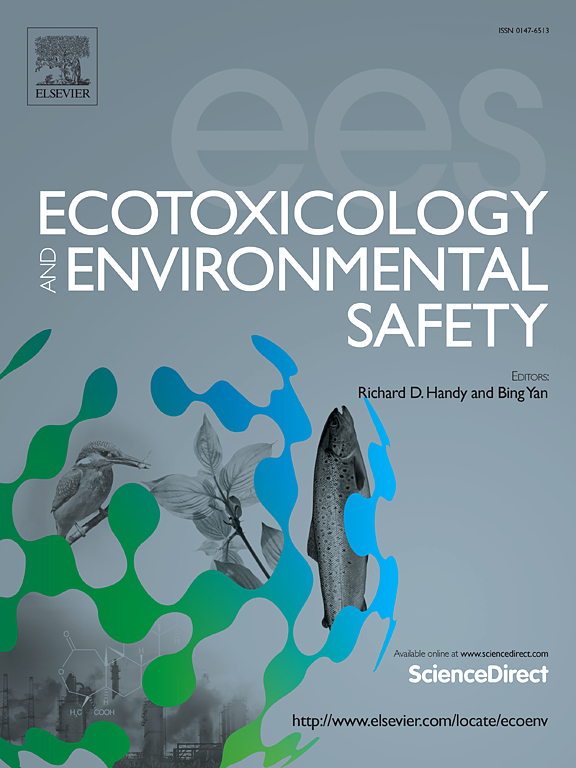Polyfloral nutritional resources promote bumble bee colony development after exposure to a pesticide mixture
IF 6.2
2区 环境科学与生态学
Q1 ENVIRONMENTAL SCIENCES
引用次数: 0
Abstract
Bumble bees are important pollinators of crops in the field and greenhouses. They are naturally exposed to a combination of interacting stressors, e.g., loss of flowering resources and exposure to plant protection products. Mass-flowering crops are important resources for bees, but they may result in unbalanced nutrition due to different nutritional values. In this study, a semi-field experiment was conducted to evaluate the response of Bombus terrestris colonies after the application of a tank mixture containing the insecticide chlorantraniliprole and the fungicide prochloraz, either in monofloral-managed lupin (Lupinus albus) as high pollen protein resource or in presence of an additional polyfloral flower mixture. Our results demonstrate an evident effect on worker mortality after application of the tank mixture. Higher worker mortality in polyfloral treatments compared to the untreated control was observed. The number of young brood and pupae in colonies in polyfloral control were significantly higher than in monofloral treatment. However, no long-term effects on the number or weight of new queens were found. Furthermore, flowering resources, but not pesticide exposure, affected colony weight. Exposure to the tank mixture resulted in declining nectar yeasts abundance and an increasing proportion of phylloplane yeasts in forager guts. In conclusion, diverse flowering resources are important for a bumble bee colony’s development. Even in a high pollen protein crop, low flower diversity may act as an additional stressor. Thus, we suggest further maintaining and promoting flowering strips or flowering fields in agricultural landscapes, even near high pollen protein crops, to enhance bee health.
多花营养资源促进大黄蜂暴露于农药混合物后的群体发育
大黄蜂是田间和温室作物的重要传粉者。他们自然地暴露于相互作用的压力源的组合,例如,开花资源的损失和暴露于植物保护产品。大量开花作物是蜜蜂的重要资源,但由于营养价值不同,可能导致蜜蜂营养不平衡。在本研究中,通过半田间试验,研究了在单花管理的露苹(Lupinus albus)作为高花粉蛋白资源或存在额外的多花花混合物的情况下,使用含有杀虫剂氯虫腈和杀菌剂丙氯嗪的罐混合物后,地螟蜂(Bombus terrestris)菌落的反应。我们的结果表明,在应用罐内混合物后,对工人死亡率有明显的影响。与未处理的对照相比,多花处理的工蜂死亡率更高。多花对照蜂群中幼巢数和蛹数显著高于单花对照。然而,没有发现对新蜂后的数量或重量有长期影响。此外,开花资源而非农药暴露影响菌落重。暴露于罐混合物中导致食用者肠道中花蜜酵母丰度下降,叶面酵母比例增加。综上所述,开花资源的多样性对大黄蜂群体的发展至关重要。即使在高花粉蛋白作物中,低花多样性也可能成为额外的压力源。因此,我们建议在农业景观中进一步维护和推广花带或花田,甚至在高花粉蛋白作物附近,以提高蜜蜂的健康水平。
本文章由计算机程序翻译,如有差异,请以英文原文为准。
求助全文
约1分钟内获得全文
求助全文
来源期刊
CiteScore
12.10
自引率
5.90%
发文量
1234
审稿时长
88 days
期刊介绍:
Ecotoxicology and Environmental Safety is a multi-disciplinary journal that focuses on understanding the exposure and effects of environmental contamination on organisms including human health. The scope of the journal covers three main themes. The topics within these themes, indicated below, include (but are not limited to) the following: Ecotoxicology、Environmental Chemistry、Environmental Safety etc.

 求助内容:
求助内容: 应助结果提醒方式:
应助结果提醒方式:


